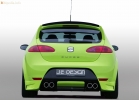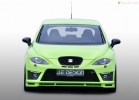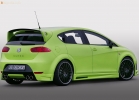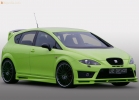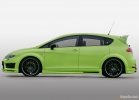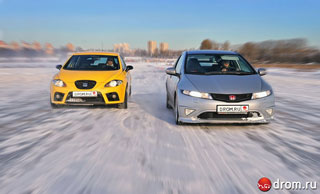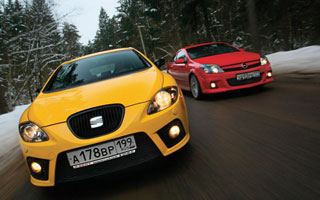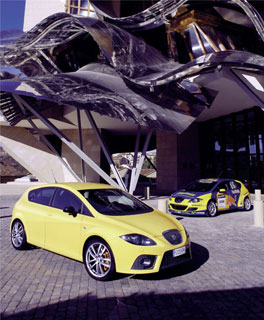SEAT Leon Cupra R test drive since 2009 hatchback
Catalan character
 Despite the offensive defeat from the BMW at the 2007 Turin Championship, the charged hatchback Seat Leon Cupra is rightfully considered one of the best sports cars of the touring class.
Despite the offensive defeat from the BMW at the 2007 Turin Championship, the charged hatchback Seat Leon Cupra is rightfully considered one of the best sports cars of the touring class. In January 2008, the civil version of the famous Leon Cupra enters the Russian market. As for the sporty ancestor, he, in fact, remains the only car that is able to fight on WTCC routes with the recognized leader of the BMW 320SI body championship. In the past and in the current seasons, only misfires on the final races in Macau did not allow the Seat to overthrow Bavarz from the world throne. And although the title over and over again eludes the Spanish lion, there is no doubt: not today, so tomorrow the victorious hegemony of the BMW will stop.
Spanish fans who crave the victory of a compatriot can confirm their loyalty to the SEAT by buying Leon Cupra with a 240-horsepower sports engine. On the eve of the second generation of CuPra, we went to the SEAT second-generation debut to run into the Spanish lion on the expanses of the Catalan coast of Costa-Dorad.
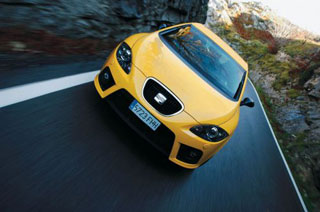 Catalans who have been striving for independence for many years are offended when they are called the Spaniards. And the point is not only in language differences and historical and political disagreements. The very nature of the Catalan people is much more sophisticated, prudent and pragmatic than the Spaniards. Here is a completely different mentality. For example, in Catalonia to the spirit is not tolerated by Corrida. But the Catalans are rightfully considered magnificent businessmen and artists. Dali, Miro, Gaudi were all Catalans.
Catalans who have been striving for independence for many years are offended when they are called the Spaniards. And the point is not only in language differences and historical and political disagreements. The very nature of the Catalan people is much more sophisticated, prudent and pragmatic than the Spaniards. Here is a completely different mentality. For example, in Catalonia to the spirit is not tolerated by Corrida. But the Catalans are rightfully considered magnificent businessmen and artists. Dali, Miro, Gaudi were all Catalans. SEAT (La Sociedad Espanola de Automobiles de Turismo) was created in 1950 as a folk Spanish brand. But the plant and the design bureau are located near Barcelona, \u200b\u200bat the foot of the Holy Catalan Mount Montserrat. This leaves an imprint on the nature of the cars. The Spanish lion is dusting with Catalan pragmatism. To make sure of this, just climb inside.
The interior of Leon Cupra, to put it mildly, is disappointed. The deliberately simple finish of the salon and sports seats without an electric drive is already too clearly given by minimalism. In a cheaper car, this could probably be closed with your eyes. But it is strained to twist the plastic seat controller in a car worth $ 50 thousand, you must admit, not too nice. Builds functionality, which, as is customary among the Catalans, is at the highest level. To get used to the Leon Cupra salon, it takes only a few seconds. The number of buttons and switches, minus, mounted in the central console of the navigation and audio system control keyboard, is minimal. The instrument panel is read perfectly. The leather steering wheel has sports thickenings that provide an excellent grip ...
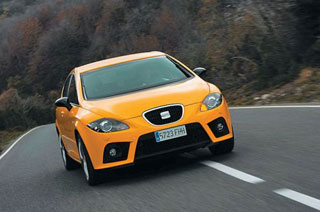 Departure from the parking lot is given by Leon Cupra with some difficulty. Even at a discount on sports disposition, the suspension seems too tough for the city. She still practices small waves and cracks in the asphalt, but the overcoming of bedridled policemen responds in the iron body of Leon wild pain.
Departure from the parking lot is given by Leon Cupra with some difficulty. Even at a discount on sports disposition, the suspension seems too tough for the city. She still practices small waves and cracks in the asphalt, but the overcoming of bedridled policemen responds in the iron body of Leon wild pain. The controllability test on the desert mountain road on the outskirts of Sithsa leaves a much better impression. Thanks to the Supervisor, Leon holds the track perfectly. By replacing the steel fork and the rotary tsapfu steering mechanism with aluminum elements, the SEAT designers changed the suspension kinematics towards light insufficient rotation. And this positively affected controllability. The disconnected ESP stabilization system is in such a way that it does not annoy its intervention too much, picking up only in critical situations. The only negative is that at low speed the steering wheel seems too cotton for such a charged car. So the slow, winding serpentine, which does not allow to rise above the third program, like city streets, is not too suitable for a lion. Cupra is not a rally, but a ring car created for wide tracks and speedy turns. At a speed of 100 km/h, the control becomes more acute. And hot breathing of two -liter
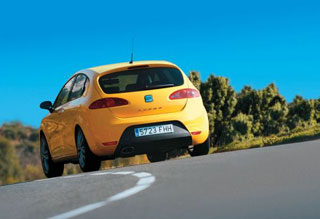 the turbo engine is felt much more clearly.
the turbo engine is felt much more clearly. A 240-horsepower engine deserves admiration! Which, however, is not surprising. The heart at the Catalan lion is Aryan. By and large, the SEAT plant in Martorel, where Cupra is assembled, is only a body and assembly enterprise. The SEAT orders almost all nodes and units from suppliers, the number of which exceeds seven hundred. Motors are assembled at Volkswagen factories in Germany, Hungary and Mexico.
At 2200 min-1 (the maximum torque of the engine is achieved in a fairly wide range from 2200 to 5500 min-1) the turbine is turned on, and Cupra opens the second wind. With proper operation, a 6-speed box selector up to 100 km/h can accelerate in just 6.4 s. A kilometer sprint from the place of Leon overcomes 26.4 s. CuPra racing dynamics is impressive! But the brakes are matching: 17-inch (345x30 mm) brake discs in front and 16-inch (286x12 mm) on the rear wheels allow to be torn down literally a few meters from the turn. But just before the traffic lights it is better to look more often in the rear view mirror and remember that not all cars have such a powerful brake potential.
 Long -term strategy
Long -term strategy In late autumn, an ultramodern design studio was opened on the territory of the SEAT technical center in Martorel, where, under the leadership of the chief designer of the Seat, Belgian Luke Donkerolke, specialists from ten countries work over the cars of the future. Their first creation, the concept of the Seat Tribu, was introduced this year in Frankfurt. In the spring, a second -generation Ibiza Ibiza will take place on the auto show in Madrid. But all this is only part of the long -term development program of the Spanish brand, the result of which should be an increase in the annual SEAT sales by 2018 to 800 thousand cars. And this means that over the next 11 years, the company will have to double production. Last season, SEAT managed to sell 408,318 cars. A third was sold in Spain, and the main part was exported. The best cars are bought in Western Europe (86%). Six percent falls on Central Europe and Latin America. The remaining two percent parted around the rest of the world. As for the model range, this year, as in the past, the most popular is Ibiza 41% of total production and sales. This is followed by Leon -28%, ALTEA XL 9.5%, Altea 8.5%, Cordoba 7%, Alhambra 3.5%, Toledo 1.5%and Altea Freetrack 1%.
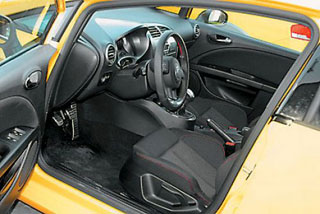 Driving
Driving At low speed, the steering seems not acute enough for such a charged car. But this is the only thing you can complain about.
Salon
There are practically no complaints about the functionality, but the interior decoration looks too simple.
Comfort
Sports seats with lateral support are convenient, but the suspension rigidity negatively affects comfort.
Safety
8 Eirbags, good ESP and very reliable brakes.
Price
Due to the low popularity of the brand in Russia, the price seems overstated.
Technical characteristics of Seat Leon Cupra
Dimensions, mm 4323x1768x1458
Diesel engine, 1984 cm3, 240 hp/57006300 min-1
Mechanical transmission, 6-speed
Dynamics 0-100 km/h, C 6.4
Maximum speed, km/h 247
Competitors Ford Focus ST, Volkswagen Golf GTI, Opel Astra OPC
Advantages and disadvantages
+ Magnificent accelerated dynamics and huge brake potential.
- the lack of a suspension rigidity regulator, which could greatly simplify urban operation.
Our opinion
CuPra accelerates 0.30.4 seconds faster than the closest competitors of charged hatchbacks Ford Focus ST, VW Golf GTI and Opel Astra OPC. Great dynamics and handling make Seat a real find for fans of speed. But simple interior decoration does not fit with the high cost of the car.
Vladimir Makkaveev
Source: Magazine 5 wheel [January 2008]

